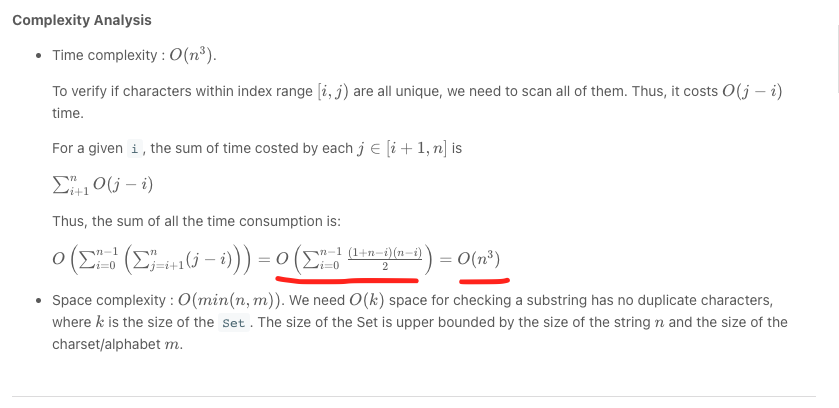Answer the question
In order to leave comments, you need to log in
The sum of an arithmetic progression?
Please tell me how the reductions of this sum were deduced:

I can’t understand (give) something how it turned out to be O (n ^ 3). Or is it just an assumption...
Answer the question
In order to leave comments, you need to log in
The expression under the sum, marked in red in the picture, is the sum of an arithmetic progression, you yourself wrote it.
The first term is 1 (for j=i+1), the last one is ni (for j=n). There are ni in total. Well, then - the standard formula: the average of the extreme members, multiplied by their number.
How does this get O(n^3). According to the mind, it is necessary to open the brackets and decompose into the sum of three rows, depending on the degree of i in the term. Further, the sum of i will also give O(n^2). The sum over i^2 will give O(n^3). Here it is no longer possible to use an arithmetic progression, but this is a well-known formula - the sum of n squares will give n (n + 1) (2n + 1) / 6. It can be derived by taking the series f(x)=1+x+x^2+...+x^n = (1-x^{n+1})/(1-x) and finding (x* f'(x))'. Then you can substitute x=1 there. Or is there visual evidence. Each square is a square of cubes. All of them can be folded into a pyramid. 6 such pyramids can be folded into a parallelepiped.
Didn't find what you were looking for?
Ask your questionAsk a Question
731 491 924 answers to any question